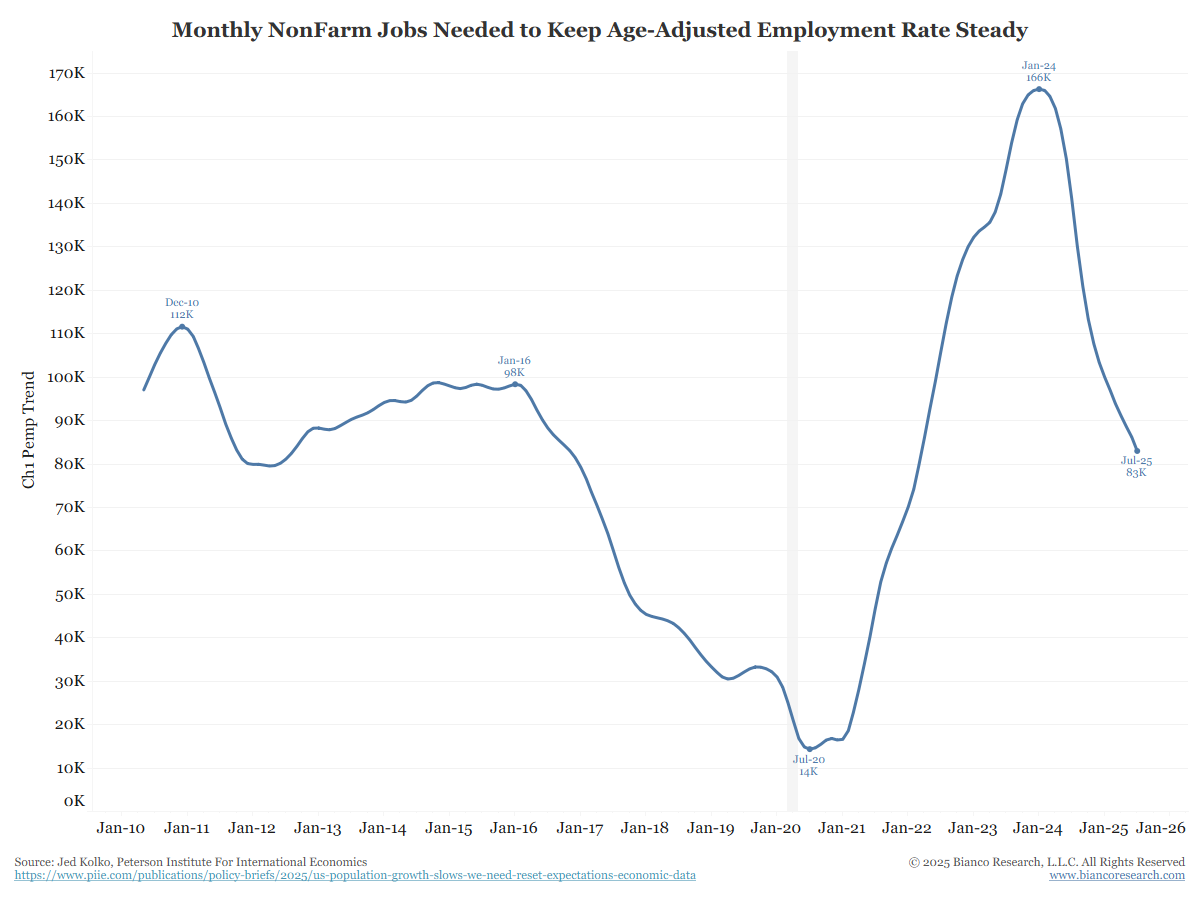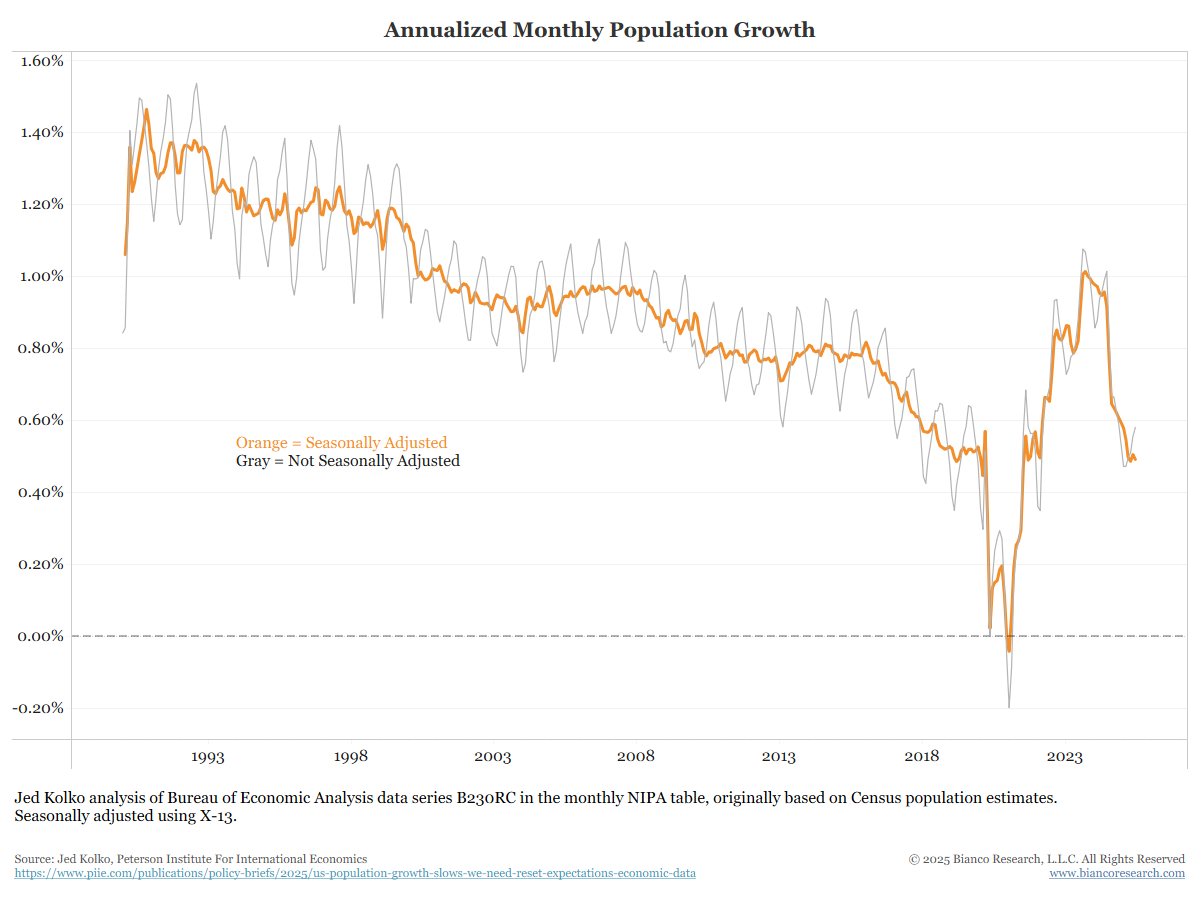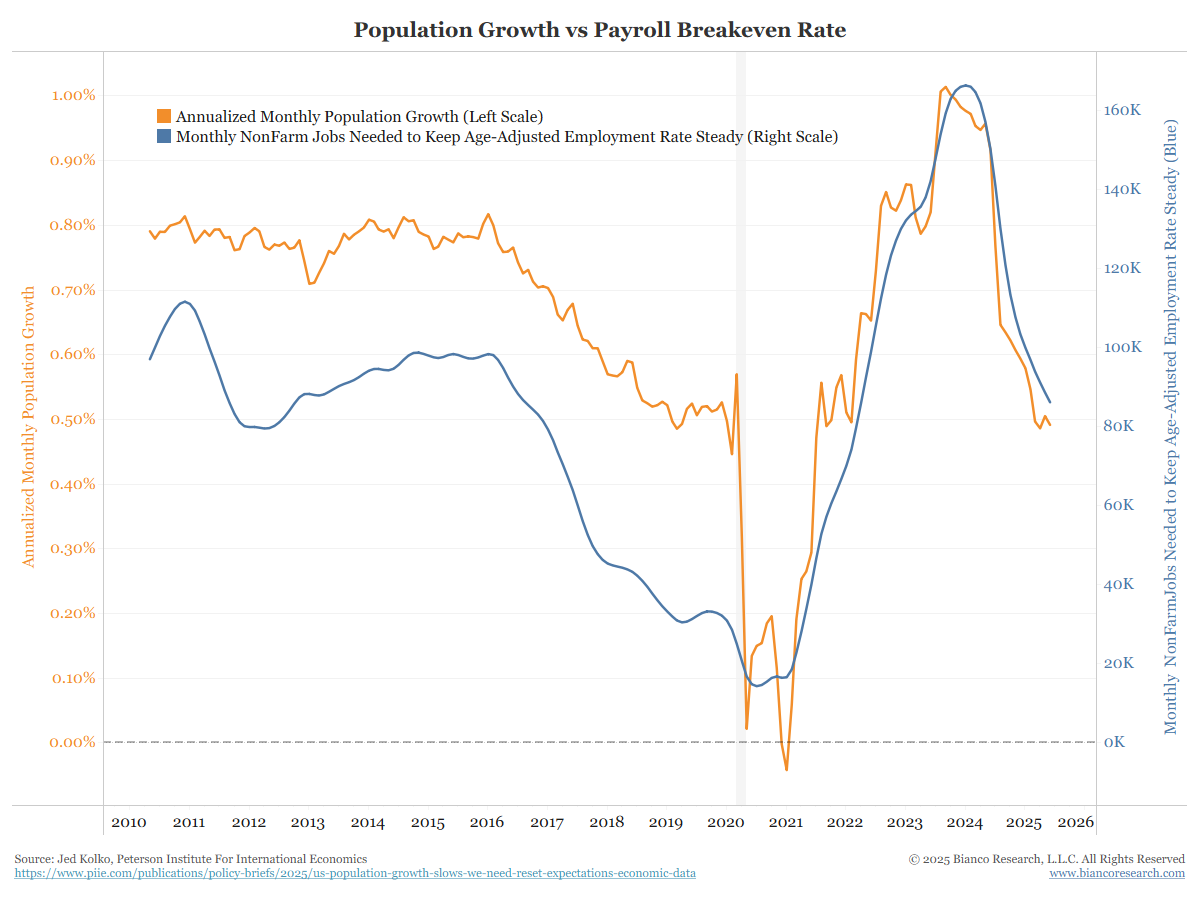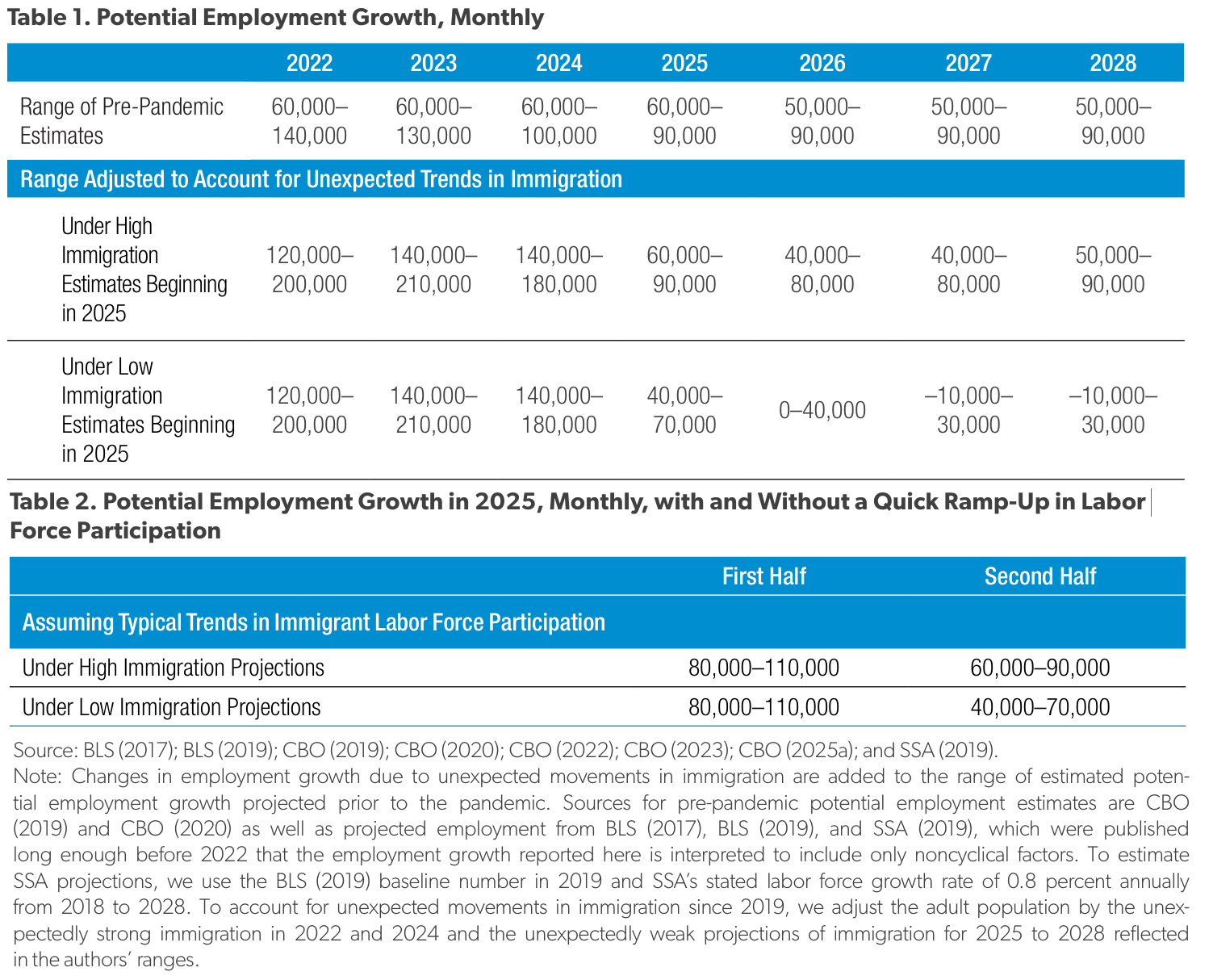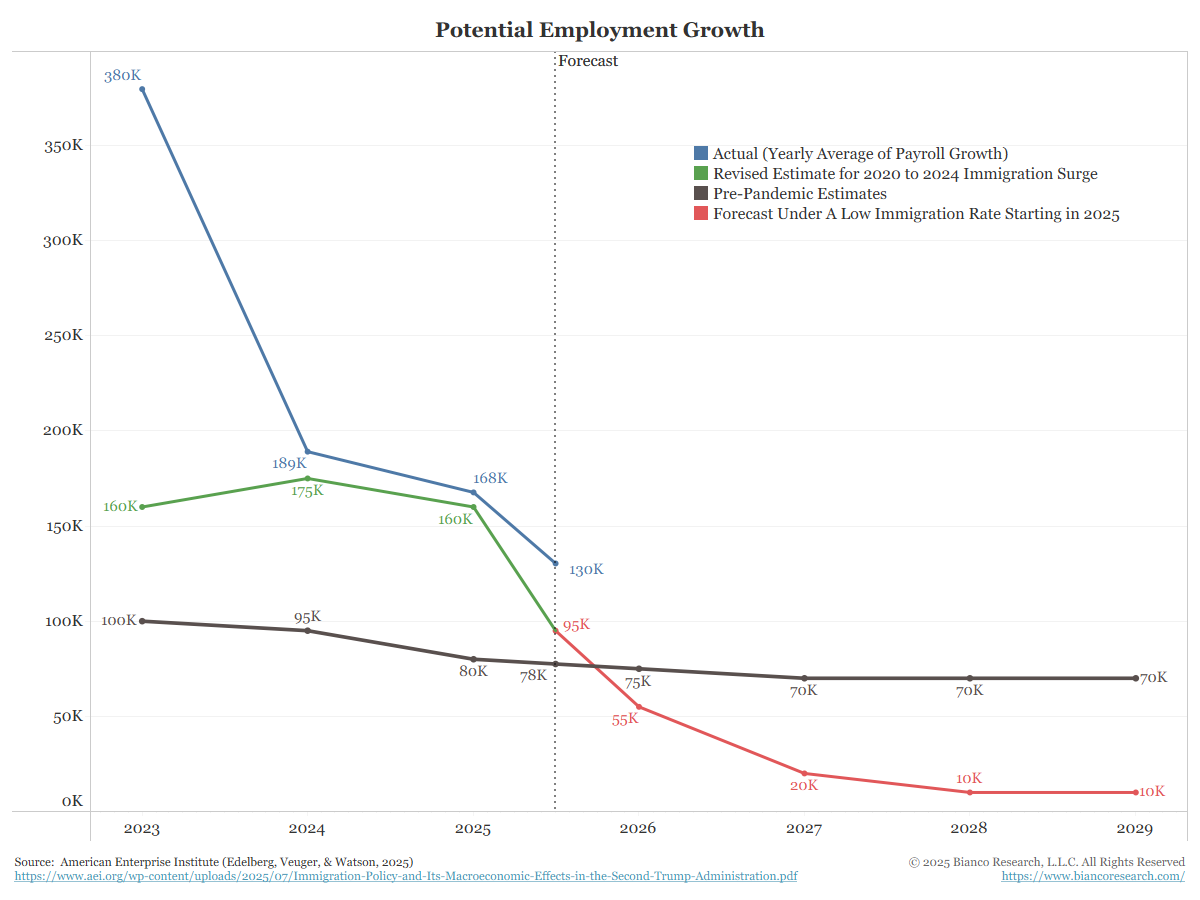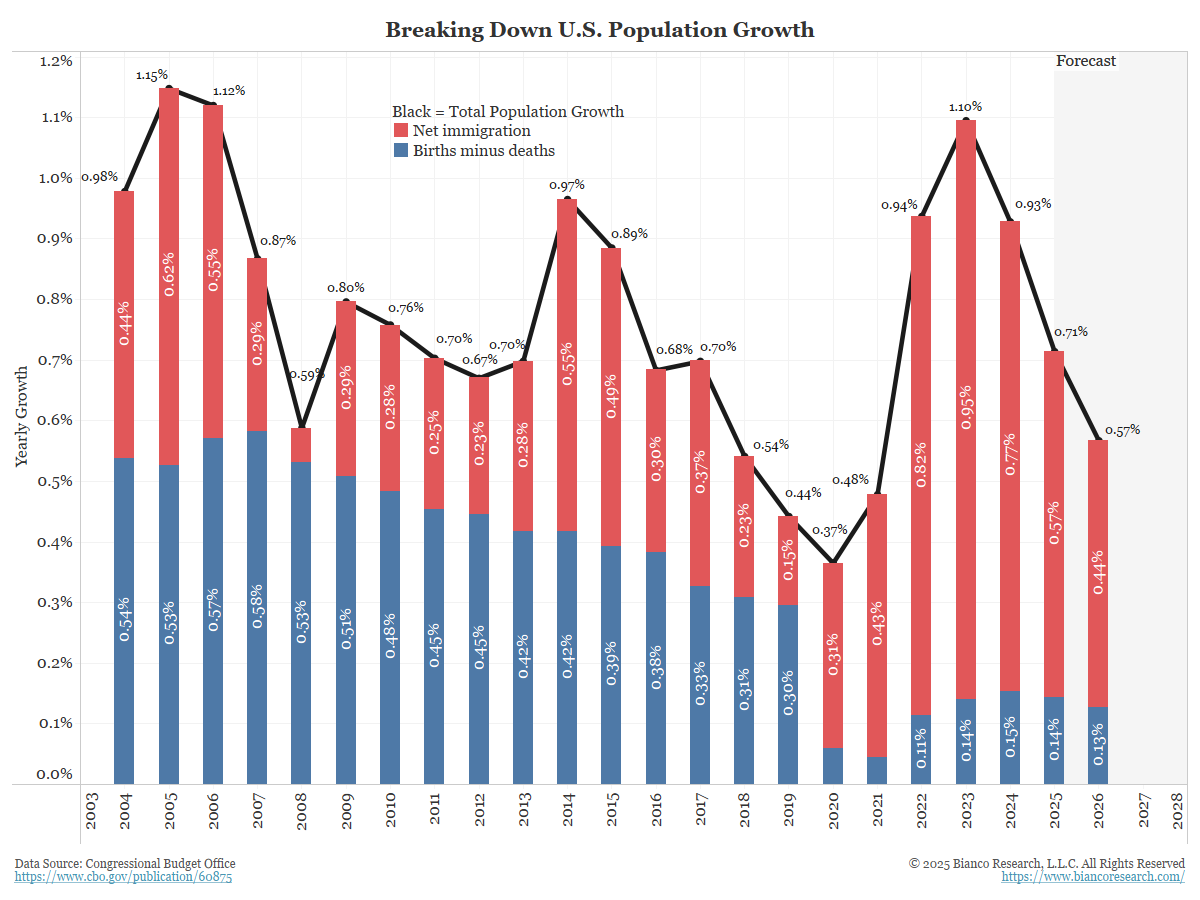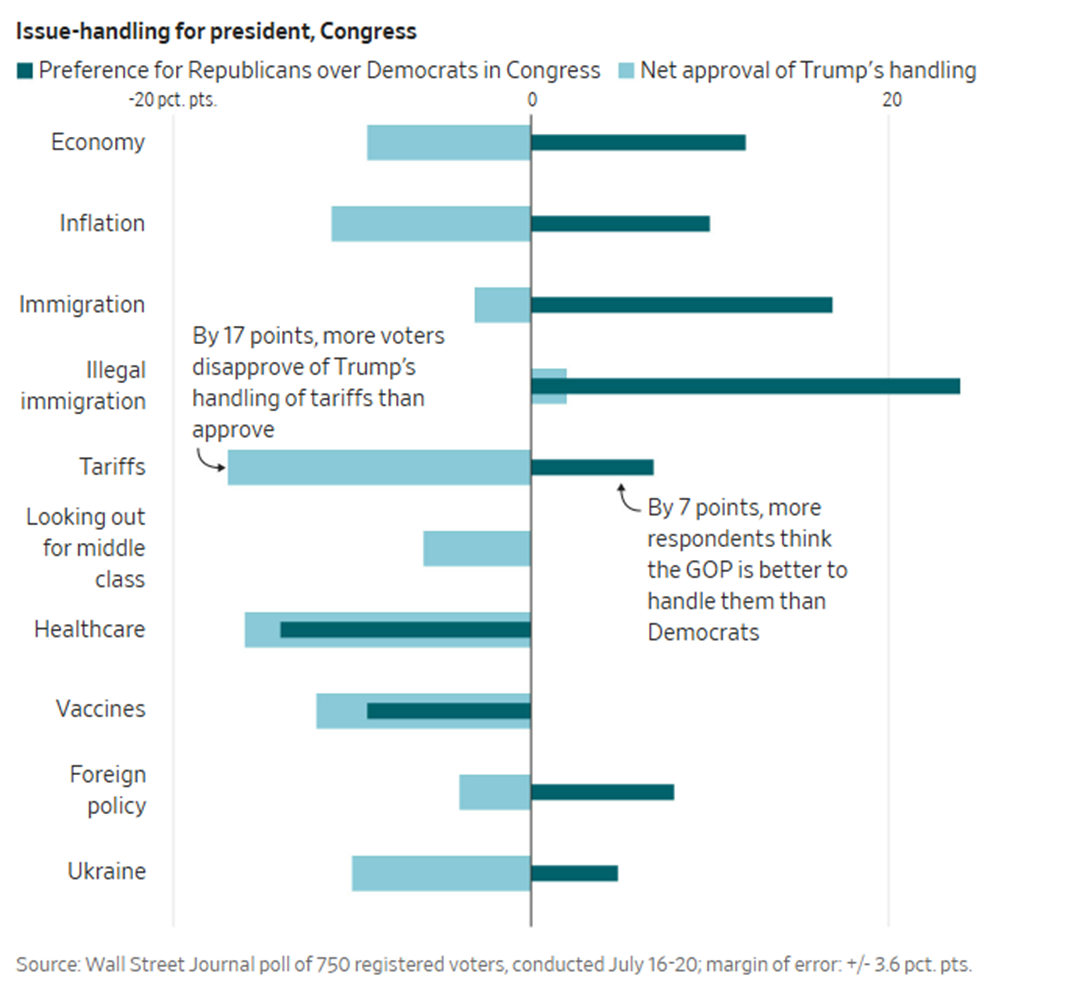-
- Peterson Institute of International Economics – (July 2025) Jed Kolko: As US population growth slows, we need to reset expectations for economic data
US population growth has slowed sharply in the last year and a half, as the immigration surge of the early 2020s has ended and the population continues to age. Fewer jobs are needed to keep up with the growth of the labor force, and growth rates of output and consumption will fall even if per capita output and consumption hold steady. The total US population is growing at an annualized rate of 0.5 percent, down from 1 percent in late 2023. Kolko estimates that the breakeven rate of monthly payroll growth in the jobs report needed to keep up with the labor force has fallen from 166,000 jobs in early 2024 to 86,000 jobs in June 2025.
- Peterson Institute of International Economics – (July 2025) Jed Kolko: As US population growth slows, we need to reset expectations for economic data
Summary
Comment
Jed Kolko is a senior researcher at the Peterson Institute. He is also the former chief economist at Indeed and Trulia.
In his report linked above, released a few days before the payrolls report, he estimates the number of jobs required to cover population growth and new entrants into the workforce is now in the low 80,000s and going straight down.
We tend to forget that the unemployment rate and the number of jobs created every month are effectively population measures. And what drives them is the country’s population growth.
The American Enterprise Institute put out a similar report a month ago:
-
-
- The American Enterprise Institute – (July 2025) Immigration Policy and Its Macroeconomic Effects in the Second Trump Administration
We assess the macroeconomic implications of the observed and expected changes to immigration policy during the second Trump administration. We project that net migration in 2025 will be between −525,000 and 115,000, reflecting a dramatic decrease in inflows and somewhat higher outflows. Net migration may be reduced even further in 2026 before rebounding in 2027 and 2028. These changes will reduce gross domestic product growth by 0.3–0.4 percentage points in 2025 and put significant downward pressure on growth in the labor force and employment. Monthly payroll employment growth could be near zero or negative in the next few years.
- The American Enterprise Institute – (July 2025) Immigration Policy and Its Macroeconomic Effects in the Second Trump Administration
-
We would argue not enough people are considering the number of jobs needed to cover the population and new entrants into the workforce. This is because we haven’t had to for decades, until Biden threw the border wide open and Trump slammed it shut.
Wall Street sees falling payrolls numbers, panics, and says the Fed should cut rates.
However, Jed Kolko’s paper above suggests we need to reset our expectations about a 100,000 to 150,000 job-per-month level. A low population growth country cannot grow this fast without creating inflation, making things worse.
Is Population Falling Faster Than Expected?
Could the population slowdown be much more than forecasted above (which is derived from official Census data)? Anecdotes suggest this is possible.
The Los Angeles Times – (June 20, 2025) L.A. bus ridership plummets amid fears of immigration arrests
Immigrants are leaving US workforce in mass.
Remittance payments US→MX plummeting, down over -2 million from a year ago.
Biggest decline by far in 30+ years – a period that includes a homebuilding depression and a 100-year financial crisis. pic.twitter.com/o49TeyLvOC
— Eric Finnigan (@EricFinnigan) August 3, 2025
Additionally, the chart below shows the two-month revision in jobs, which is the second largest in forty-three years. What does that tell us?
Every other time we’ve seen this, you could argue “something changed.”
Could it be that statisticians are underestimating the slowdown in population growth? An argument could be made that population growth in the country may currently be zero or negative. The assumptions in May and June were too optimistic. Massive downward revisions were needed.
Will This Change?
The following table from The Wall Street Journal last week shows the public’s opinion about Republicans and the president’s handling of specific issues.
Trump/Republicans get their highest marks on immigration. It’s the only net positive opinion on Trump. So even if the Republicans and/or Trump buy into the argument presented here that job growth is slowing, they are not going to reverse their decision to close the border. It’s the reason they won the election and it would be a disaster politically to change.
Therefore, we need to reset our expectations, as this is the world we live in, and demanding the Fed cut rates will only exacerbate the situation.

